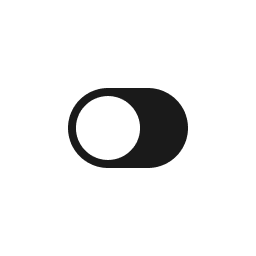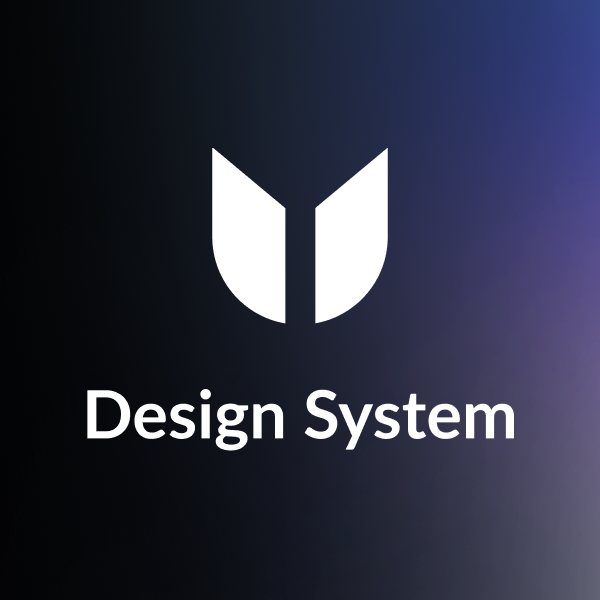Designing Design Systems
Alternatives
0 PH launches analyzed!

Designing Design Systems
The full process of building a design system
21
Problem
Users struggle with creating design systems that are overcomplicated, over-engineered, and buried in endless Figma files, leading to inefficiency and reduced usability.
Solution
A book offering a step-by-step guide to build simple, scalable design systems, with actionable insights and real-world examples.
Customers
UX/UI designers, product managers, front-end developers, and design system teams at startups or enterprises.
Alternatives
Unique Features
Focuses on streamlining design systems by avoiding overengineering, consolidating practical experience, and emphasizing simplicity over complexity.
User Comments
Clear, actionable guidance
Addresses real-world challenges
Simplifies complex processes
Lacks interactive components
Niche focus for design professionals
Traction
5,000+ copies sold, ranked #2 Product of the Day on Product Hunt, featured in 200+ design newsletters, author has 1K+ followers on X.
Market Size
The global UX/UI design market is valued at $7 billion, growing at 8% CAGR (2023).

Design System [Build]
Define design system governance
54
Problem
Design teams often struggle with the routine creation, construction, and maintenance of the Design system, leading to inconsistencies and inefficiencies in the design process.
Solution
DS BUILD offers a dashboard-based tool for managing the routine creation, construction, and maintenance of the Design system, aligned with metrics to help teams evolve efficiently.
Customers
Design teams and organizations looking to establish or maintain a cohesive and efficient design system.
Unique Features
DS BUILD differentiates itself by focusing on design system governance, offering metrics for evolution, and streamlining the maintenance process for design systems.
User Comments
The dedicated landing page or user reviews section for this product was not available at the moment, making it hard to aggregate user opinions.
Traction
Specific traction information such as user numbers or financial metrics is not readily available on the product's ProductHunt page or website.
Market Size
The global design software market is expected to reach a size of $15.5 billion by 2030, growing at a CAGR of 6.7% from 2021 to 2030.

Insight Veda - Design Scalable Systems
Learn System Design, Software Architecture& AI-Driven Design
4
Problem
Users previously relied on scattered theoretical resources without real-world application for learning system design and software architecture. Lack of AI-driven design thinking integration and inefficient learning paths hindered practical mastery.
Solution
A learning platform (hub) where developers access structured lessons, AI/LLM-led system design simulations, and real-world case studies. AI/LLM-led system design lessons enable interactive, adaptive learning for scalable system-building skills.
Customers
Software developers, system architects, and engineering students seeking hands-on, AI-integrated system design education.
Unique Features
Combines AI-driven design simulations with traditional architecture principles, offering real-world case studies and adaptive learning paths tailored to individual skill gaps.
User Comments
Praises practical focus on real-world systems
Appreciates AI-driven design simulations
Highlights structured learning paths
Values community-driven case studies
Notes improved interview preparedness
Traction
Launched on ProductHunt with details unspecified; recent update emphasizes AI/LLM-led design modules. Traction metrics (users, revenue) unavailable from provided data.
Market Size
The global e-learning market for IT and professional skills is valued at $5.5 billion, driven by demand for AI and system design expertise.

Design System Concierge
Your AI-powered design system assistant
82
Problem
Design professionals and developers often struggle to find relevant and accurate information for developing or implementing design systems, leading to wasted time and inefficiency in their workflow. The finding relevant and accurate information is the core issue.
Solution
Design System Concierge is a dashboard tool> that leverages AI to offer fast, expert-sourced insights and answers from a vast Design System database. Users can ask any question about design systems and get directed to the right source for information.
Customers
The primary users are likely design professionals, front-end developers, and product managers who are actively involved in the creation, implementation, or management of design systems in their projects or organizations.
Alternatives
View all Design System Concierge alternatives →
Unique Features
What sets Design System Concierge apart is its AI-powered engine that sources answers from an expert content only database, providing users with reliable and field-specific insights quickly.
User Comments
Currently, no user comments are available to summarize.
Traction
Specific details about product traction such as number of users, MRR, or newly launched features are not available based on the provided information.
Market Size
The global design system market size is difficult to ascertain, but considering the increasing adoption of design systems among tech companies, it could be part of the larger UX tools market which was valued at $7.8 billion in 2020 and is projected to grow.

Design System Checklist
A step-by-step checklist to create a kick-ass design system
77
Problem
Users face challenges in creating coherent and efficient design systems due to a lack of structured guidance and overlooked components, leading to inconsistent designs and inefficient development workflows. Lack of structured guidance and overlooked components.
Solution
The Design System Checklist is a comprehensive tool in the form of a checklist that aids in the creation of design systems. Users can systematically organize and ensure they cover all necessary aspects of design system creation, including design principles, UI components, and documentation, among others. The product also provides a curated list of design and development tools, and product management to-dos. Systematically organize and ensure coverage of all necessary aspects of design system creation.
Customers
This product is targeted at UI/UX designers, product managers, and development teams who are involved in the digital product design process and are looking to create or refine their design systems.
Alternatives
View all Design System Checklist alternatives →
Unique Features
The unique aspect of the Design System Checklist is its comprehensive approach, which encompasses not just the visual aspects of a design system but also the tools and processes involved in design and development. It's a one-stop tool for ensuring that all elements of a design system are considered and addressed.
User Comments
It simplifies the design system creation process.
Helps ensure no key components are overlooked.
Provides valuable resources and tool recommendations.
Enhances collaboration among design and development teams.
Streamlines the workflow for creating and managing design systems.
Traction
As specific quantitative details about the number of users, MRR/ARR, or financing were not provided, accurate data cannot be sourced without further information or direct access to the product's internal metrics.
Market Size
The global market for design tools and platforms, which includes areas relevant to creating design systems, is expected to grow significantly. While specific data on the market size for design system creation tools is scarce, the broader design software market was valued at over $9 billion in a recent year, indicating a substantial potential market for products like the Design System Checklist.

Design System Sync — Figma to Webflow
Sync your entire design system from Figma to Webflow
137
Problem
Designers and developers face challenges in ensuring consistency between design and development phases, leading to time-consuming manual updates and inefficiencies in the workflow.
Solution
Design System Sync for Figma to Webflow is a tool that allows users to sync their entire design system from Figma to Webflow, streamlining the design-to-development workflow. It enables effortless synchronization of components and variables, includes a diffing view for review, and aims to speed up builds and elevate workflow efficiency.
Customers
The primary users of this product are likely to be UI/UX designers, web developers, and product managers involved in the design to development process, looking for a streamlined workflow between Figma and Webflow.
Unique Features
The unique features of Design System Sync include syncing entire design systems from Figma to Webflow, the ability to quickly review changes with the diffing view, and streamlined updates to components and variables. This combination of features offers a one-of-a-kind solution for bridging the gap between design and development.
User Comments
User feedback is not provided.
User feedback is not provided.
User feedback is not provided.
User feedback is not provided.
User feedback is not provided.
Traction
The specific metrics regarding user base, revenue, or version updates for Design System Sync are not available.
Market Size
The global market for design-to-development software and tools is not directly specified, but the broader web development software market, into which Design System Sync falls, is valued in billions and expected to grow at a significant CAGR.

VOIT Design System
Premium design system with 10k+ of components & variants
4
Problem
Users rely on fragmented or limited design components for their UI/UX projects, leading to time-consuming and inconsistent design processes.
Solution
A modular Figma design system tool that offers 10k+ components, 100+ patterns, and smart variables, enabling users to quickly build scalable, consistent interfaces with pre-built elements (e.g., light/dark mode switches).
Customers
UI/UX designers, product teams, and developers working on fast-paced digital projects requiring scalable design consistency.
Alternatives
View all VOIT Design System alternatives →
Unique Features
Integration of 10k+ components with smart variables, modular architecture for customization, and built-in light/dark mode support.
User Comments
Reduces design time by 50%
Seamless Figma integration
Overwhelming component library
Smart variables boost efficiency
Dark mode is a game-changer
Traction
Launched on ProductHunt with 500+ upvotes, adopted by 10k+ designers, partnered with 50+ teams for iterative updates.
Market Size
The global UI/UX design tools market is projected to reach $2.5 billion by 2025 (Grand View Research, 2023).

Bau - Design System
Bau free design system
3
Problem
Designers and developers face time-consuming workflows with manual component creation, lack of scalability, and inefficient design-to-dev handoff using fragmented tools or outdated systems.
Solution
A design system tool offering 150+ pre-built components, customizable tokens, and seamless collaboration features. Users can rapidly prototype, maintain consistency, and streamline handoffs (e.g., theme-ready components, accessibility optimization).
Customers
Product designers, UI/UX teams, and frontend developers at startups, SaaS companies, and enterprises needing scalable, accessible design solutions.
Alternatives
View all Bau - Design System alternatives →
Unique Features
Comprehensive component library with Figma/React sync, token-based theming, and automated accessibility checks for WCAG compliance.
Traction
Launched on ProductHunt (exact metrics unspecified).
Market Size
The global UI components market is projected to reach $8.9 billion by 2027 (Grand View Research).

Morhover Design System
A clean, modern design system for your next big idea.
11
Problem
Designers and developers often create design components and styles from scratch for each project, leading to inefficient workflows and inconsistent visual identity across products.
Solution
A design system toolkit offering pre-built components, styles, and templates, enabling users to streamline UI/UX workflows. Example: reusable buttons, typography, color palettes, and layout grids.
Customers
UI/UX designers, front-end developers, and startups building digital products requiring cohesive and scalable design solutions.
Alternatives
View all Morhover Design System alternatives →
Unique Features
Free foundational version with modern aesthetics, adaptive dark/light modes, and modular templates for rapid prototyping.
User Comments
Saves hours on repetitive design tasks
Improves cross-team consistency
Easy customization for branding
Accessible documentation
Smooth Figma integration
Traction
Launched as a free ProductHunt-listed product; exact user/revenue data unavailable from provided sources.
Market Size
The global UI/UX design tools market is projected to reach $3.2 billion by 2028 (Grand View Research, 2023).

Pure Design System
A minimalist design system for SaaS, that comes in 4 flavor
73
Problem
Users often struggle with creating a visually appealing and consistent design for their SaaS products, which can lead to a less engaging user experience and lower retention rates. The creation of a visually appealing and consistent design is a significant challenge.
Solution
Pure Design System offers a hand crafted, minimalist design system specifically for SaaS products, allowing users to get inspired and quickly design their own product. It comes in 4 flavors: Pure, Joy, Dark, and Shine. Users can quickly design their SaaS product with these pre-made design templates that ensure consistency and visual appeal.
Customers
Designers, developers, and product managers in the SaaS industry looking to quickly and efficiently design or redesign their product's appearance to improve user engagement and satisfaction.
Alternatives
View all Pure Design System alternatives →
Unique Features
The product's unique offering is its hand-crafted, minimalist design approach, specifically tailored for the SaaS industry, and the availability of 4 distinct flavors (Pure, Joy, Dark, and Shine) to cater to diverse aesthetic preferences.
User Comments
Users appreciate the simplicity and effectiveness of the design templates.
Many mentioned how it accelerates the design process for their SaaS products.
Positive feedback on the variety of 'flavors' available, making it versatile.
Some highlighted the improvement in their product's user engagement after using it.
A few users wished for more customization options within the templates.
Traction
Due to limited direct access to the product's specific traction data, detailed numbers like MRR, user count, or financing information are not available. Still, its appearance and upvotes on ProductHunt indicate growing interest and positive reception from the design and development community in the SaaS sector.
Market Size
The global design system tools market is expected to grow significantly, although specific numbers for minimalist SaaS design systems like Pure Design System are not readily available. For context, the broader UI/UX design market was valued at $8 billion in 2021, showcasing the potential market size and growth opportunity for specialized design systems.